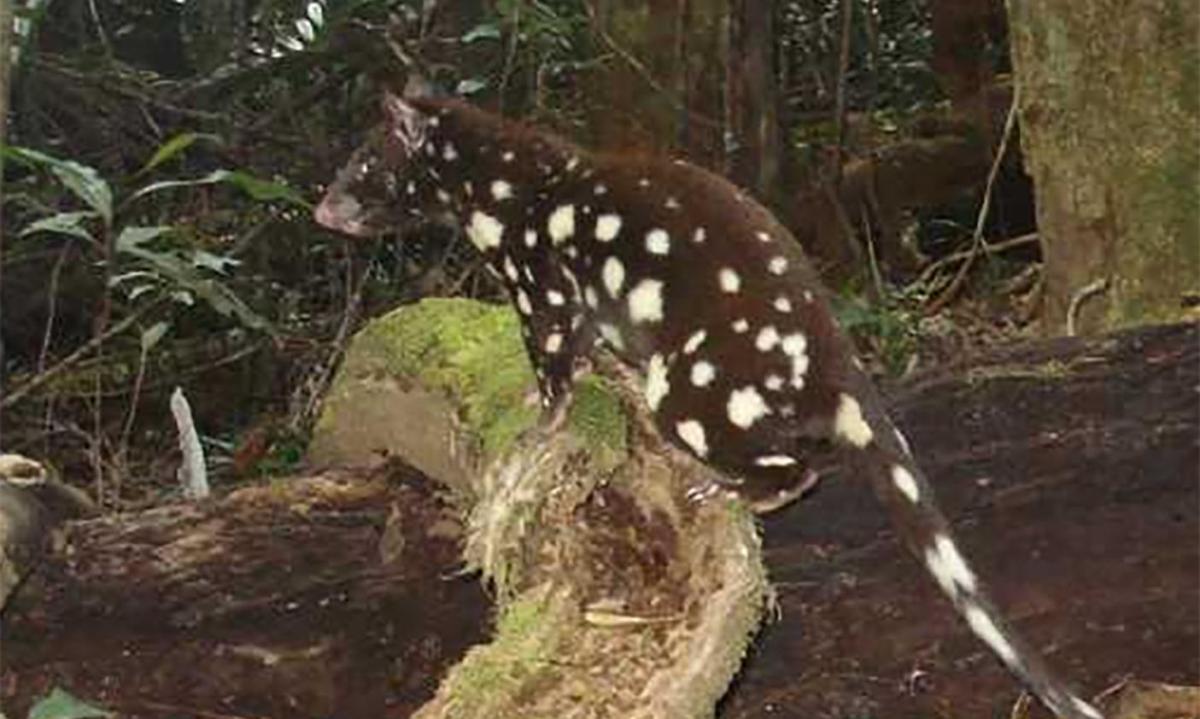“Tropical Queensland’s Spotted-tail Quoll Population on the Brink of Extinction”
The spotted quoll numbers in North Queensland have declined to critically endangered levels, new research into the endangered marsupials suggests.
For two years, scientists monitored populations of the spotted quoll subspecies in North Queensland. Dasyurus maculatus gracilisthat lives in cool regions at high altitude.
The population has halved from previous estimates of 500 quolls around 25 years ago to 221 adult quolls – meeting the criteria for the subspecies to be classified as critically endangered under the Environment and Biodiversity Protection Act.
Related: Dying for sex: Endangered male quolls may mate to death instead of sleeping, scientists say
After the Tasmanian devil, the spotted quoll is the second largest carnivorous marsupial, with adult males weighing several kilograms and females around 1.5 kg. The species preys on animals such as possums, bandicoots, rats and birds.
Study co-author Conrad Hoskin, associate professor at James Cook University, described the spotted-tail quoll as a “faster, more agile version of a Tassie devil” capable of tree-climbing to catch its prey.
Using images captured by lure-activated camera traps, the researchers were able to identify individual quolls based on the unique patterns of their spots.
Hoskin said there are six distinct groups of northern spotted quolls living in different mountainous regions.
“The compound problem is that the sum [number] is divided into six small populations ranging in size from about 10 to about 100 individuals,” said Hoskin.
A major concern is that these isolated quoll groups “enter into a downward spiral due to genetic issues,” he said. “If you only have 10 or 20 individuals, you cannot avoid having related individuals breed with each other.”
The carnivores play an important ecological role, with Hoskin describing the quoll as “the best predator in these mountaintops.”
Researchers aren’t yet sure what’s driving the population decline. Cane toad poisoning is a theory, but “cane toads have never been particularly common in the highlands of the humid tropics,” Hoskin said. However, he noted that “in the last decade or two, we’ve seen a lot of female toads . . . get to the higher elevations.”
See also: Public Enemy Number One: On the Hunt with Queensland’s Volunteer Cane Toad Busters
“The other thing is that there is a lot of fragmentation and traffic in North Queensland, so definitely some get hit on the roads. Climate change could well affect them if it affects their prey, like possums and [other] small mammals.
“If you start getting inbreeding effects on top of other threats, you could really make pretty quick declines.”
The northern subspecies of the spotted-tail quoll is distinct from the northern quoll, a smaller species of quoll also found in Queensland and also endangered.
The study was published in the journal Austral Ecology.
Don’t miss interesting posts on Famousbio
